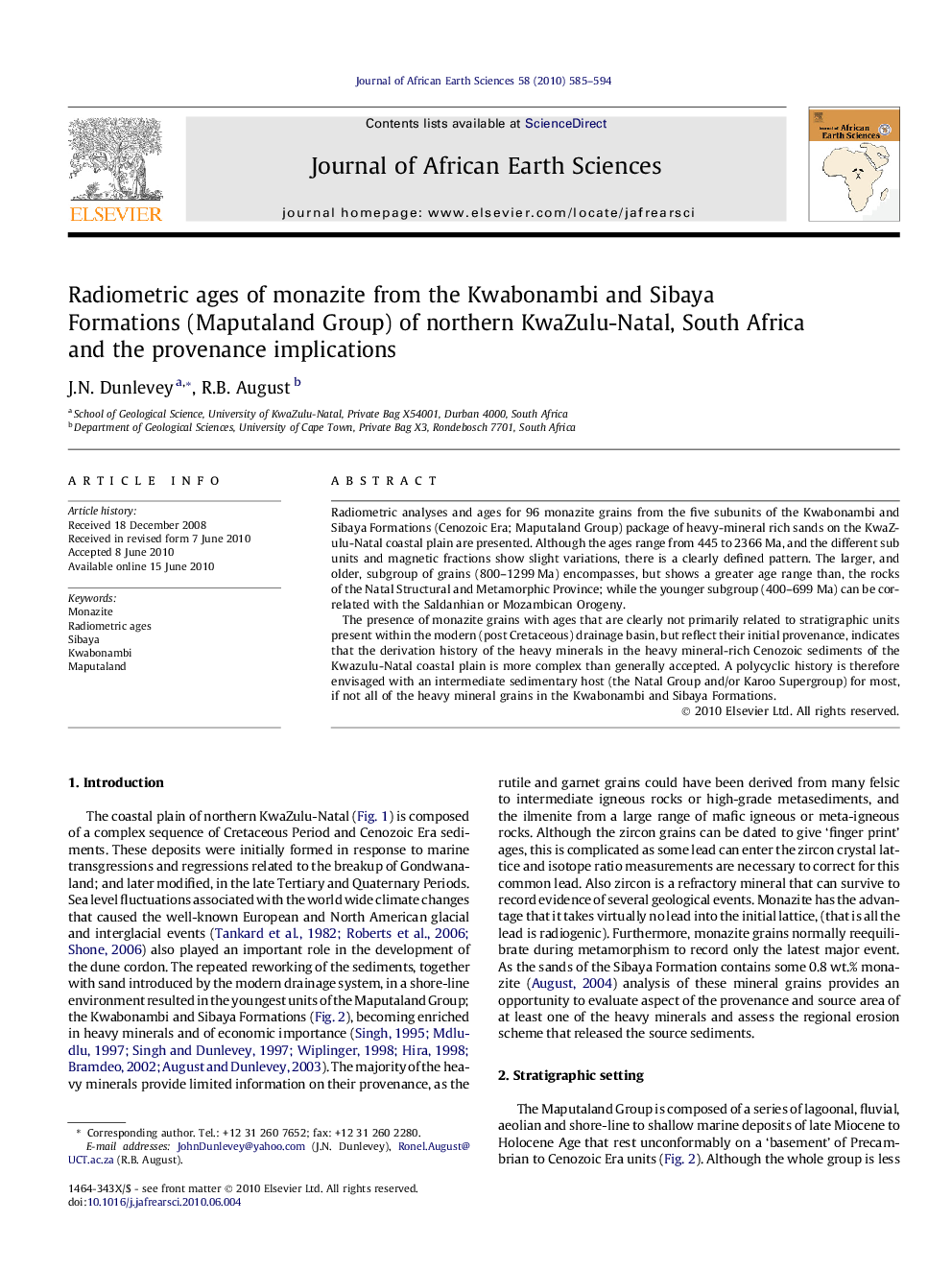| Article ID | Journal | Published Year | Pages | File Type |
|---|---|---|---|---|
| 4729290 | Journal of African Earth Sciences | 2010 | 10 Pages |
Radiometric analyses and ages for 96 monazite grains from the five subunits of the Kwabonambi and Sibaya Formations (Cenozoic Era; Maputaland Group) package of heavy-mineral rich sands on the KwaZulu-Natal coastal plain are presented. Although the ages range from 445 to 2366 Ma, and the different sub units and magnetic fractions show slight variations, there is a clearly defined pattern. The larger, and older, subgroup of grains (800–1299 Ma) encompasses, but shows a greater age range than, the rocks of the Natal Structural and Metamorphic Province; while the younger subgroup (400–699 Ma) can be correlated with the Saldanhian or Mozambican Orogeny.The presence of monazite grains with ages that are clearly not primarily related to stratigraphic units present within the modern (post Cretaceous) drainage basin, but reflect their initial provenance, indicates that the derivation history of the heavy minerals in the heavy mineral-rich Cenozoic sediments of the Kwazulu-Natal coastal plain is more complex than generally accepted. A polycyclic history is therefore envisaged with an intermediate sedimentary host (the Natal Group and/or Karoo Supergroup) for most, if not all of the heavy mineral grains in the Kwabonambi and Sibaya Formations.
